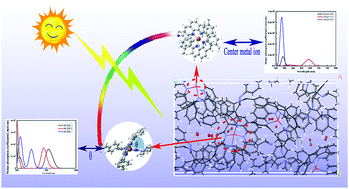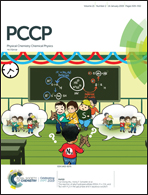A computational study on the tunability of woven covalent organic frameworks for photocatalysis†
Abstract
A newly reported woven covalent organic framework (COF-505) with a stable and flexible structure is believed to be a promising candidate for photocatalysis. Here, we carried out density functional theory calculations to investigate the properties of COF-505 related to photocatalysis. We first investigated the ability of visible light absorption by this COF-505. Variations of central metal ions and the dihedral angle between two adjacent ligand groups were respectively taken into account for adjusting its light harvesting capabilities. Replacing the original Cu(I) ions with Pd(II) ions causes a red shift in the visible light region. Increasing the dihedral angle results in an increase of the band gap for COF-505 with Cu(I) and a decrease for COF-505 with Pd(II), respectively. The potential of COF-505 as a photocatalyst was furthermore explored by studying the adsorption of H2, CO2 and H2O on it. All molecules can be stably adsorbed. In particular, COF-505 with Pd(II) exhibits appreciable O–H activation of the adsorbed H2O in the presence of a positive charge, which is promising for initiating water splitting. Overall, our results suggest that COF-505 holds great potential for photocatalytic applications.

- This article is part of the themed collection: 2018 PCCP HOT Articles


 Please wait while we load your content...
Please wait while we load your content...